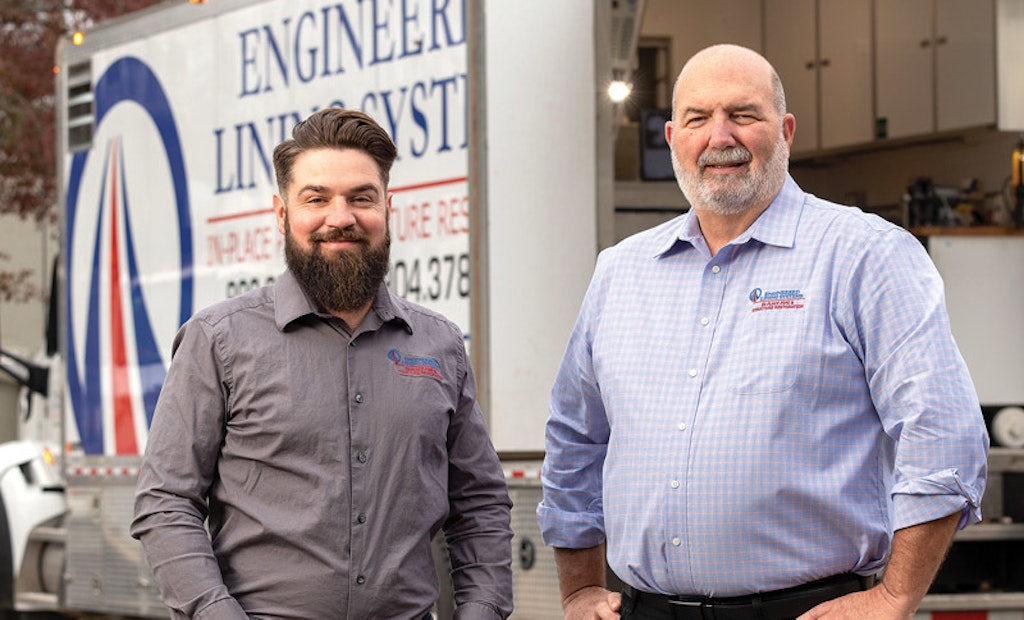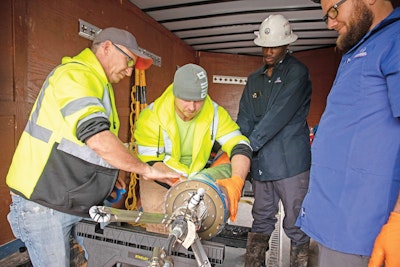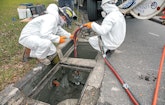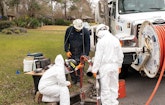
Engineered Lining Systems Project Manager James Macko (left) and owner and president Don Arch stand in front of the latest addition to the ELS trenchless installation fleet. The truck, built out by Omega Liner Company, contains an IBG Pro UV curing system.
Engineered Lining Systems prides itself on taking a decidedly technology-centric approach to trenchless pipeline rehabilitation. And few things epitomize that philosophy more than the company’s nearly $1 million investment in a German-made pipe lining system.
Developed by IBG...













